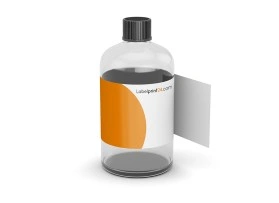In the fast-paced world of product packaging and branding, the smallest details often make the biggest impact. Among these, labels play a pivotal role, serving as silent salespeople, brand ambassadors, and vital information carriers. While various label formats exist, printed labels on a roll have emerged as an industry standard, offering unparalleled efficiency, versatility, and cost-effectiveness for businesses of all sizes. But beyond their common use, what truly makes these labels a cornerstone of modern packaging?
This in-depth guide delves into ten essential aspects of printed labels on a roll, providing valuable insights for businesses looking to optimize their branding, streamline their operations, and make informed purchasing decisions. Whether you’re a startup launching its first product or an established enterprise seeking to enhance its packaging strategy, understanding these nuances is crucial for success.
1. Efficiency in Application: The Automated Advantage
One of the primary benefits of printed labels on a roll is their seamless compatibility with automated labeling machinery. Unlike sheet labels, roll labels are designed for high-speed application, significantly reducing labor costs and increasing production throughput. This is particularly critical for businesses with large volumes or those operating in time-sensitive industries. Studies show that automated labeling can increase application speeds by over 500% compared to manual methods, making roll labels an indispensable tool for scaling operations. This efficiency translates directly into cost savings and faster time-to-market.
2. Material Versatility: A Label for Every Product
The range of materials available for printed labels on a roll is extensive, allowing for customization that perfectly matches product requirements and brand aesthetics. From durable BOPP (biaxially oriented polypropylene) for moisture resistance to elegant paper stocks for a classic look, and even specialty films for extreme temperatures or chemical exposure, the options are vast. This versatility ensures that your labels not only look good but also perform optimally under various environmental conditions, protecting your brand image and product integrity.
3. Print Quality and Customization: Beyond the Basics
Modern printing technologies, such as flexographic and digital printing, allow for exceptionally high-quality graphics, vibrant colors, and intricate details on printed labels on a roll. Businesses can achieve photorealistic images, precise color matching, and a wide array of finishes like matte, gloss, or even tactile textures. This level of customization enables brands to create unique visual identities that stand out on crowded shelves and effectively communicate their brand story to consumers.
4. Cost-Effectiveness for Bulk Orders
While initial setup costs for custom dies or plates might exist, the per-unit cost of printed labels on a roll significantly decreases with larger order volumes. This makes them an economical choice for businesses requiring substantial quantities of labels. The efficiency of roll-to-roll printing also contributes to lower production costs, offering a superior return on investment compared to other labeling formats for bulk purchases.
5. Durability and Protection: Standing the Test of Time
Depending on the chosen material and laminates, printed labels on a roll can offer exceptional durability. They can be designed to withstand moisture, abrasion, UV exposure, and temperature fluctuations, ensuring that product information and branding remain intact throughout the product’s lifecycle. This resistance is crucial for products that undergo shipping, handling, and varying storage conditions, maintaining a professional appearance from factory to consumer.
6. Sustainable Solutions: Eco-Friendly Options
As consumer demand for sustainable products grows, so does the availability of eco-friendly options for printed labels on a roll. Businesses can choose from recycled paper stocks, biodegradable films, and even compostable materials. Utilizing these sustainable label choices not only enhances a brand’s environmental credentials but also resonates positively with environmentally conscious consumers, contributing to a stronger brand image.
7. Compliance and Information: More Than Just Branding
Beyond branding, labels serve a critical function in conveying essential product information, including ingredients, nutritional facts, safety warnings, and barcodes. Printed labels on a roll provide ample space and clarity for this vital data, ensuring compliance with regulatory requirements across various industries. The ability to print variable data, such as batch numbers or expiration dates, further enhances their utility for traceability and consumer safety.
8. Storage and Handling Advantages
The roll format offers significant advantages in terms of storage and handling. Rolls are compact, easy to store, and protect labels from damage during transportation and in the warehouse. This organized format also simplifies inventory management and reduces waste caused by damaged or misplaced individual labels.
9. Specialized Features and Enhancements
Modern label manufacturing allows for a host of specialized features to be incorporated into printed labels on a roll. These include security features like holograms or tamper-evident seals, promotional elements like peel-off coupons or scratch-offs, and even smart label technologies such as NFC or RFID tags for enhanced interactivity and data tracking. These enhancements can add significant value to a product and improve consumer engagement.
10. Partnering with the Right Manufacturer
The success of your labeling strategy heavily depends on partnering with a reputable and experienced label manufacturer. A good manufacturer will offer expert advice on material selection, printing processes, and design optimization to ensure your printed labels on a roll perfectly meet your specific needs and budget. They should provide consistent quality, reliable delivery, and excellent customer service, acting as a true extension of your production team.
Conclusion
Printed labels on a roll are far more than just adhesive pieces of paper; they are a critical component of product success, offering a blend of efficiency, versatility, and brand-building power. By understanding these ten key aspects, businesses can leverage the full potential of roll labels to enhance their packaging, streamline operations, and ultimately, drive sales. Investing in high-quality, thoughtfully designed roll labels is an investment in your brand’s future.

